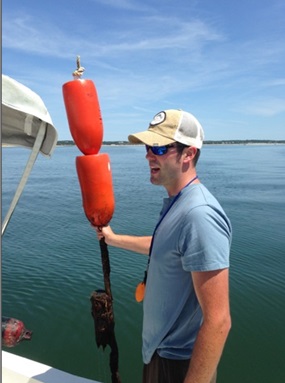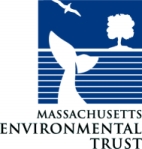In May we placed acoustic transmitter tags on 50 horseshoe crabs and deployed receivers on buoys throughout Wellfleet Harbor (see Keeping Tabs on Wellfleet’s Horseshoe Crabs, June 25). Since then, we’ve had nearly 72,000 crab detections. The detections, which combine a transmitter number, receiver number, location, date, and time can be organized to track individual crabs, which gives us the ability to map out each crab’s movements.
So what have the crabs been up to?
Through mid-July, the horseshoe crabs of Wellfleet Bay have shown diverse movements. Roughly half the crabs have moved out of Wellfleet Bay at least once, and many have left without returning. The other half of the crabs stayed in Wellfleet Bay, and many have stayed local to specific areas. Some tagged crabs have left Wellfleet Bay within days of being tagged from sites as far north as Indian Neck. On the contrary, some crabs have taken scenic tours of the bay. For example, one crab tagged at the sanctuary beach headed west to Great Island, then northeast to Indian Neck, then south to Lieutenant Island, and finally came full circle as it returned to the sanctuary a few weeks later.
Before the field work began for this study, people had varying predictions as to what story the data would tell. Some folks predicted the crabs would stay in Wellfleet Bay all year long, while others predicted they would leave Wellfleet Bay soon after spawning to move into the deeper waters of Cape Cod Bay. So far, the horseshoe crabs of Wellfleet Bay have proven all of these predictions to be at least partially true, and only time will tell what they do as the summer progresses!
This blog was posted by Mike Long, a master’s student at the University of Massachusetts at Amherst. Mike has been conducting the field work for the first summer of a two-year horseshoe crab study in Wellfleet Harbor funded by the Massachusetts Environmental Trust. U-Mass and the US Geological Survey are also cooperators.




